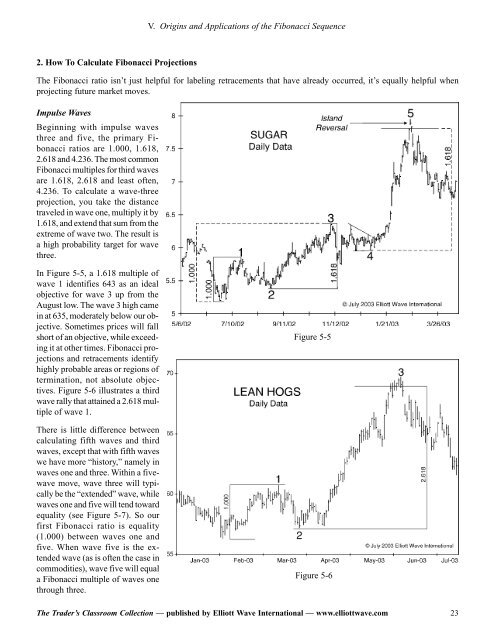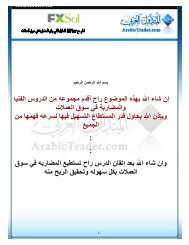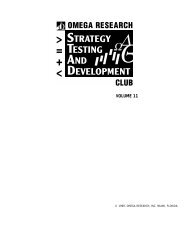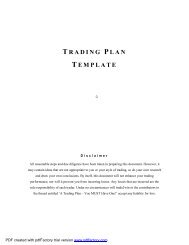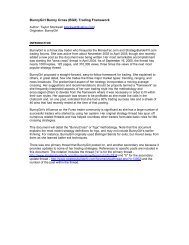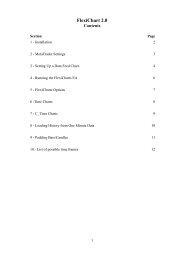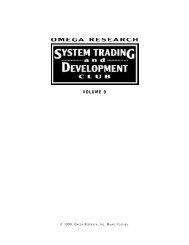the trader's classroom collection
the trader's classroom collection
the trader's classroom collection
You also want an ePaper? Increase the reach of your titles
YUMPU automatically turns print PDFs into web optimized ePapers that Google loves.
2. How To Calculate Fibonacci Projections<br />
V. Origins and Applications of <strong>the</strong> Fibonacci Sequence<br />
The Fibonacci ratio isn’t just helpful for labeling retracements that have already occurred, it’s equally helpful when<br />
projecting future market moves.<br />
Impulse Waves<br />
Beginning with impulse waves<br />
three and five, <strong>the</strong> primary Fibonacci<br />
ratios are 1.000, 1.618,<br />
2.618 and 4.236. The most common<br />
Fibonacci multiples for third waves<br />
are 1.618, 2.618 and least often,<br />
4.236. To calculate a wave-three<br />
projection, you take <strong>the</strong> distance<br />
traveled in wave one, multiply it by<br />
1.618, and extend that sum from <strong>the</strong><br />
extreme of wave two. The result is<br />
a high probability target for wave<br />
three.<br />
In Figure 5-5, a 1.618 multiple of<br />
wave 1 identifies 643 as an ideal<br />
objective for wave 3 up from <strong>the</strong><br />
August low. The wave 3 high came<br />
in at 635, moderately below our objective.<br />
Sometimes prices will fall<br />
short of an objective, while exceeding<br />
it at o<strong>the</strong>r times. Fibonacci projections<br />
and retracements identify<br />
highly probable areas or regions of<br />
termination, not absolute objectives.<br />
Figure 5-6 illustrates a third<br />
wave rally that attained a 2.618 multiple<br />
of wave 1.<br />
There is little difference between<br />
calculating fifth waves and third<br />
waves, except that with fifth waves<br />
we have more “history,” namely in<br />
waves one and three. Within a fivewave<br />
move, wave three will typically<br />
be <strong>the</strong> “extended” wave, while<br />
waves one and five will tend toward<br />
equality (see Figure 5-7). So our<br />
first Fibonacci ratio is equality<br />
(1.000) between waves one and<br />
five. When wave five is <strong>the</strong> extended<br />
wave (as is often <strong>the</strong> case in<br />
commodities), wave five will equal<br />
a Fibonacci multiple of waves one<br />
through three.<br />
Figure 5-5<br />
Figure 5-6<br />
The Trader’s Classroom Collection — published by Elliott Wave International — www.elliottwave.com<br />
23


